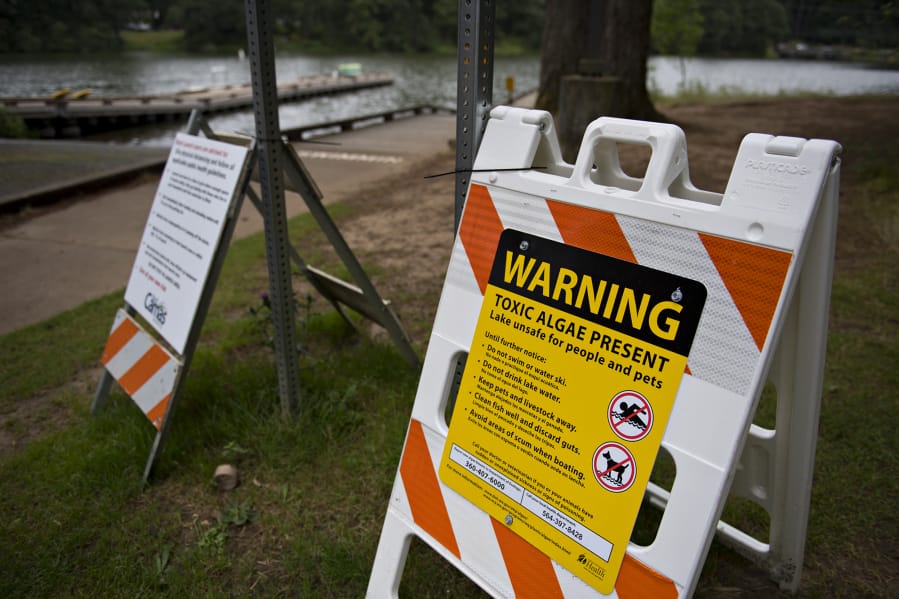Vancouver and Lacamas lakes were placed under restrictive health advisories Friday morning, according to a Clark County Public Health news release.
Testing revealed elevated levels of cyanotoxins in Lacamas Lake’s water, placing it under a danger advisory. Public Health is advising against all recreation in the lake, including swimming, kayaking, paddle boarding, canoeing, water skiing and fishing.
Blooms of cyanobacteria, or blue-green algae, are currently not visible from the water’s surface but toxins are still present.
“We’re concerned people may think the lake is safe for recreating because they don’t see any of the telltale blue-green scum,” said Alyssa Payne, Clark County Public Health environmental health specialist. “The water may look normal, but the toxin levels are high.”
Lacamas Lake’s Heritage Park remains open. Water in park restrooms and shelters is not affected by lake water and remains safe to drink.
Public Health has also upgraded the advisory at Vancouver Lake to a warning. Results from water samples taken from Vancouver Lake on Monday show elevated toxin levels. Blue-green algae is visible at the swim beach and the flushing channel.
Public health advises against swimming or water skiing in Vancouver Lake. People who paddle board, kayak or canoe should avoid areas of scum in the lake. Pets should not have any contact with the water, and people who are fishing should be sure to clean fish carefully and discard organs.
Public Health has been monitoring cyanobacteria blooms at Lacamas Lake since April 9 and will continue to monitor the lake until the toxicity is below recommended levels.
Public Health will take weekly water samples to test toxin levels as long as blooms exist. Signs will be updated as conditions change.
Additional information about blue-green algae and current advisories are posted on the Public Health public beach website. To report algae blooms in other bodies of water, visit the Public Health website.




